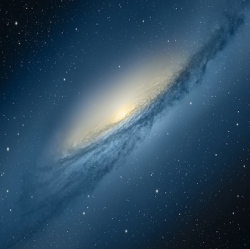
Observations made with the Atacama Large Millimeter/Submillimeter Array (ALMA) in northern Chile, which is scheduled for completion this year, have solved a longstanding mystery in solar system formation.
They showed how protoplanets forming around a young star can use their own gravitational pull to slingshot matter in the direction of their host star, fueling its growth.
When a new star is formed, the surrounding clouds of gas and dust, which amount to a very large mass, slowly begin to orbit it creating a flat disk. The disk is not entirely homogeneous and so, over hundreds of millions of years, the material starts sticking together, creating a stronger and stronger gravitational pull as the materials becomes more concentrated in places. Some of these clumps of material will eventually grow to become full-fledged planets orbiting the star.
In capturing all the nearby material, however, the planets end up creating a large gap between themselves and the star, splitting the dust and gas disk into an inner disk that lies next to the star and a very massive outer ring. The gap is large enough that, in theory, it should prevent the young star from gaining any more mass and significantly reduce its lifetime. However, astronomers have observed that this is not the case: despite the seemingly insurmountable gap between the star and the material that would feed its growth, the stars still manage to reach it. But how?
